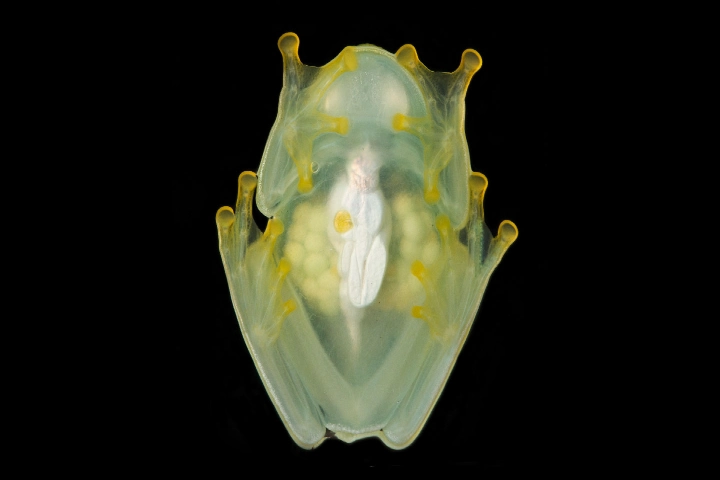Biologists knew that sleeping glass frogs have glassy skin but a new study has further revealed that while falling asleep for the day, they take nearly 90 per cent of their blood cells out of circulation.
As per a report in sciencenews.org these brightly hued cells are kept inside the hideaway pockets of the liver thereby disguising them. This find gives a new turn to the camouflage by these creatures.
Describing this, Carlos Taboada, of Duke University, North Carolina, United States, and one of the discoverers of this phenomena said: “The heart stopped pumping red, which is the normal colour of blood, and only pumped a bluish liquid.
What is truly astounding is that despite packing its red blood cells for many hours these creatures don’t suffer blood clots, pointed out Jesse Delia, the co-discoverer who is with New York City’s American Museum of Natural History.
Once up, the cells get unpacked and start circulating like usual.
The concealing of these cells results in doubling or even tripling the frog’s transparency according to the report by the researchers published in Science, a peer-reviewed academic journal. Achieving the greenish transparency is vital for the frog which hides on the undersides of the leaves to escape predators.
Delia became aware of the red blood cells by chance when he needed some images of these frogs. He put some of them in dishes in the laboratory and observed them sleeping during the day. “It was really obvious that I couldn’t see any red blood in the circulatory system. I shot a video of it — it was crazy.”
As luck would have it, Taboada too was studying this aspect on his own. They decided to collaborate on this research.
The two were confronted with the problem of what the red blood cells do in a living frog. Neither light microscopy nor anesthetising the frogs working, they found the answer in the technique generally used by engineers, called photoacoustic.
This method showed the interiors with the help of subtle vibrations which are caused by light hitting varied molecules resulting in slight energy releases. In this endeavour, Junjie Yao of Duke University joined them ensuring that the method could be used for the livers of the frogs while taking ample precautions that it did not wake them up.
Apart from these frogs there are other creatures that can become transparent like the blotched snailfish which shows the fleshtones and the lines of the finger holding it. Others include tarpon fish and eels in their larval stages and a type of Asian glass catfish.




















